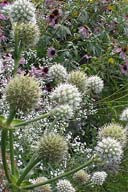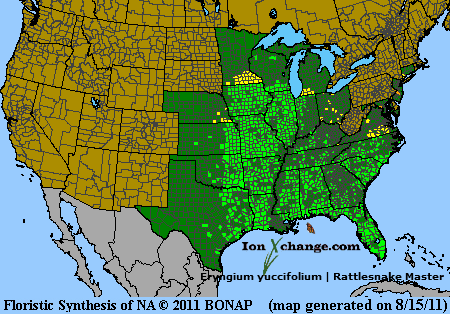 Loading... Please wait...
Loading... Please wait...- Home
- SEEDS
- SEED MIXES
- BUY PLANTS
- Info Request
-
Educational Videos
- Greenhouse Transplanting Demonstration
- Native Seed Cleaning demonstration at Ion Exchange Native Seed and Plant Nursery
- Attracting Butterflies
- Bidens - Bidens cernua Harvest Video
- Big Blue Stem Harvest
- Butterfly Milkweed Video
- Button Blazingstar - Liatris aspera Video
- Buttonbush - Cephalanthus occidentalis Video
- Canada Anemone - Anemone canadensis Harvest Video
- Cardinal Flower - Lobelia cardinalis Video
- Control Burn - Wildflower Field
- Cream Gentian - Gentiana flavida
- Culver's Root - Veronicastrum virginicum Video
- Cup Plant - Silphium perfoliatum Video
- Dormant Seeding | Planting
- Earthyman's Favorite Wildflowers Video
- Eco-Friendly Golf Course Seed Mix
- Floating Islands
- Fringed Loosestrife - Lysimachia ciliata Video
- Giant Yellow Hyssop - Agastache nepetoides Video
- Indiangrass - Sorghastrum nutans Video
- Iowa Prairie Partner Program
- Leadplant - Amorpha canescens (Potted) Video
- Meadow Blazingstar - Liatris ligulistylis
- Midland Shooting Stars - Dodecatheon meadii Video
- Native Plant Nursery Field Irrigation Experiment
- Nodding Onion - Allium cernuum Video
- Ohio spiderwort - Tradescantia ohiensis Video
- Old Man's Beard - Clematis virginiana blooms Video
- Oxeye Sunflower - Heliopsis helianthoides Video
- Prairie Spiderwort - Tradescantia bracteata
- Purple Coneflower - Echinacea purpurea Video
- Rain Garden or Water Garden Video
- Rattlesnake Master - Eryngium yuccifolium Video
- Riverbank Stabilization - Wetland Plants
- Rose Mallow - Hibiscus militaris Video
- Rosinweed - Silphium integrifolium Video
- Royal Catchfly - Silene regia
- Showy Tick Trefoil - Desmodium canadense Video
- Sneezeweed - Helenium autumnale Video
- Swamp Betony - Pedicularis lanceolata Video
- Swamp Milkweed - Asclepias incarnata Video
- Sweet Blackeyed Susan - Rudbeckia subtomentosa Video
- Tall Coreopsis - Coreopsis tripteris Video
- Urban Butterfly Garden
- Wild Bergamot - Monarda fistulosa Video
- Wild Geranium - Geranium maculatum Harvest
- Wild Goldenglow - Rudbeckia lanciniata Video
- Wild Petunia - Ruellia humilis Harvest Video
- Woodland Knotweed - Polygonum virginianum Video
- Yellow Coneflower - Ratibida pinnata Video
- Blog
- Resources
- Policies
Contact Us
Phone:
563-419-0837
or 563-535-7231
Email:
hbright@ionXchange.com
Browse Products
Add to Wish List
You Recently Viewed...
Our Newsletter
Product Description
"Rattlesnake Master, Button Snakeroot, Yucca-leaf Eryngo, Corn Snakeroot, Water-eryngo, Rattlesnake Flag, Rattlesnake Weed"
Eryngium from the Greek word for "a prickly plant" and yuccifolium from the Greek word for yucca leaves.
Found throughout the Tallgrass Region on wet or dry prairies and prairie remnants. Blooms from June through September. Sturdy plant growing two to six feet tall with bluish-green basal leaves up to feet long. Leaves on the upper stem are shorter but generally just as wide. The leaves have soft prickles along the edges. Several flower heads at the tips of the stem. The heads are made up of tiny white flowers and have a honey-like smell.
The root was used medicinally by Native Americans and early settlers. It provided them a diuretic, expectorant and emetic. In some cases the root was used to treat liver troubles. Chewing the root induces saliva flow. Teas and potions made from this plant gave results similar to those of today's Viagra.
| Sun Exposure | Prairie |
| Soil Moisture | Wet Mesic, Mesic, Dry Mesic |
| Bloom Time | Summer, Fall July, August, September |
| Bloom Color | White |
| Max Height | 4 feet |
| Wetland Code | FAC+ |
| Germ Code | C(60) |
| Seeds Per Packet | 250 |
| Seeds Per Ounce | 7,500 |
Edible Uses: Unknown
Medicidal Uses:
The plant is diaphoretic, diuretic, emetic (in large doses), expectorant and febrifuge. A decoction of the roots has been found useful in cases of exhaustion from sexual depletion, with loss of erectile power, seminal emissions and orchitis. A tincture of the roots is used in the treatment of female reproductive disorders. The pounded roots are used as a diuretic. An infusion of them is used to reduce fevers. Chewing the root increases the flow of saliva. The plant is used as an antidote to snakebites. The roots are chewed and applied to the bite.
Herbal Uses: Unknown
Product Videos
-
 Rattlesnake Ma...Earthyman views Rattlesnake Master (Eryngium yuccifolium) in b...
Rattlesnake Ma...Earthyman views Rattlesnake Master (Eryngium yuccifolium) in b...









